The GP2X: Portable Emulation Powerhouse
March 19th, 2006 by Procyon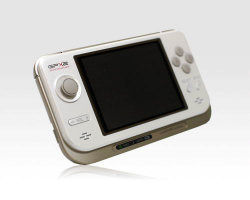 [Editor’s Note: This article was written by Procyon as his first contribution to VC&G, with additional writing by RedWolf.]
[Editor’s Note: This article was written by Procyon as his first contribution to VC&G, with additional writing by RedWolf.]
Portable electronic gaming has been around in one form or another since the mid-1970s. Nintendo, then relatively new to video games, revolutionized it in 1980 with their Game & Watch series, and again in 1989 with the release of the Game Boy. Since then, portable systems, like their console brethren, have gotten more powerful over time. Powerful enough, in fact, that they are now regularly capable of running software emulators of older game and computer systems. When a Korean company called Game Park developed the precursor of the GP2X, the GP32, they designed a system that would be completely open, allowing anyone to legally develop software for it, unlike the more common commercial products like the Game Boy Advance, the PlayStation Portable (PSP), or the Neo Geo Pocket Color. Soon after the GP32’s release, emulators for various systems — from the NES to the Arcade, and beyond — started popping up across the Internet. The GP32 became the hacker’s portable of choice, with a wide variety of different homebrew games and applications developed for the system. After the GP32’s success with hackers, Game Park thought it was time to improve upon the GP32 with a new unit. However, various factions within Game Park fought over the focus of the successor of the GP32 — should it be a multimedia machine, or a pure gaming console? The two groups couldn’t get along, so a group of employees left Game Park proper to form Game Park Holdings” (GPH), an entirely new company. Soon, GPH set out to design their vision of an ideal successor to the GP32, with incredibly expanded multimedia support, greater horsepower, and an open development system that poised the it to become the hackers’ new favorite for homebrew development. Finally, GPH’s answer arrived in November 2005 — as the GP2X.
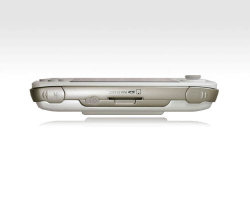 The GP2X uses Secure Digital media (aka SD cards) to store multimedia files and executable programs (games, emulators, etc). Putting an emulator on your GP2X is as simple as downloading one from the Internet, connecting your GP2X to your computer via USB, and transferring the necessary files to a SD card inside the GP2x. Alternatively, you can use any PC-compatible SD writer to write to an SD card, then place the card inside your GP2x. The GP2X has an eight-direction digital joystick, eight face buttons, and two shoulder buttons, making it ideal for nearly any emulated system configuration. It is capable of direct composite video output to a TV through the aid of the GP2X TV-out cable, and it runs (for better or worse) on two regular AA batteries. It’s backed by a 200MHz ARM CPU, coupled with a 200MHz dedicated 2D graphics accelerator, but how does it perform?
The GP2X uses Secure Digital media (aka SD cards) to store multimedia files and executable programs (games, emulators, etc). Putting an emulator on your GP2X is as simple as downloading one from the Internet, connecting your GP2X to your computer via USB, and transferring the necessary files to a SD card inside the GP2x. Alternatively, you can use any PC-compatible SD writer to write to an SD card, then place the card inside your GP2x. The GP2X has an eight-direction digital joystick, eight face buttons, and two shoulder buttons, making it ideal for nearly any emulated system configuration. It is capable of direct composite video output to a TV through the aid of the GP2X TV-out cable, and it runs (for better or worse) on two regular AA batteries. It’s backed by a 200MHz ARM CPU, coupled with a 200MHz dedicated 2D graphics accelerator, but how does it perform?
Based solely on the version of MAME that developers have been able to port to the fledgling system, it performs admirably. Not only do many of the older (and therefore, less sophisticated games) run at full speed with sound, they can be oriented to play horizontally with borders on the sides, or vertically to take advantage of the entire screen size (with a native resolution of 320×240.) Later games such as Neo Geo games or Capcom’s CPS1 arcade series will play quite well with a small frame skip. And the picture on the screen is crisp and beautiful.
MAME is by no means the only emulator present for the system. At the time of this writing, several terrific emulators have been developed or ported to the GP2X that allow it to emulate the NES, Genesis, Game Boy, Turbo-Grafx 16, SNES, Atari systems, Commodore computers, and many more. The GP2X runs a version of Linux for an operating system, so users who are familiar with Linux will understand the way that many emulator authors prefer files and ROMs to be set up. Users less familiar with Linux are often aided by the “readme” file that usually accompanies each emulator. There is a learning curve, but it’s very slight, and very approachable. In addition to emulators, there are many fantastic homebrew games that programmers have released for the system. And the system comes complete with the ability to play back MP3s and movies.
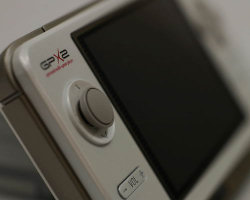 The GP2X is not perfect or without flaws. Many users have complained about the choice of a convex, mushroom-shaped cap that adorns the joystick. A particularly popular user on many of the GP2X forums has gone to the trouble to design, manufacture, and sell a concave replacement that has been highly rated by customers. Additionally, the battery life for the system is disappointingly short. Two ordinary alkaline batteries can be depleted in less than 2 hours. Users have generally opted to use rechargeable camera batteries that maintain a constant voltage through the lifetime of the battery, and their reusable nature certainly cuts down on replacement battery costs. When using these types of batteries, cordless play time can increase to just shy of 4 hours. An AC adapter is also available for purchase separately.
The GP2X is not perfect or without flaws. Many users have complained about the choice of a convex, mushroom-shaped cap that adorns the joystick. A particularly popular user on many of the GP2X forums has gone to the trouble to design, manufacture, and sell a concave replacement that has been highly rated by customers. Additionally, the battery life for the system is disappointingly short. Two ordinary alkaline batteries can be depleted in less than 2 hours. Users have generally opted to use rechargeable camera batteries that maintain a constant voltage through the lifetime of the battery, and their reusable nature certainly cuts down on replacement battery costs. When using these types of batteries, cordless play time can increase to just shy of 4 hours. An AC adapter is also available for purchase separately.
The GP2X is only four months old and it has already seen a staggering amount of development. Few of the emulators are at the level than frequent PC emulator users would call “perfect,” but the early indications are so promising that, as the scene develops, the GP2X will probably be the portable emulation platform of choice for some time to come.



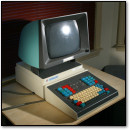
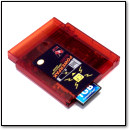
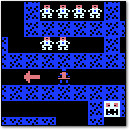
March 19th, 2006 at 10:54 pm
These are BADASS. I would prefer one of these over the PSP, too bad I’m broke. 🙁
March 20th, 2006 at 10:52 pm
Good review. A couple questions though:
Are there dedicated GP2X games available? Will there ever be any released?
How much does it cost?
December 8th, 2006 at 3:30 pm
i have the psp and i want one of these cool part is thet they run on linux